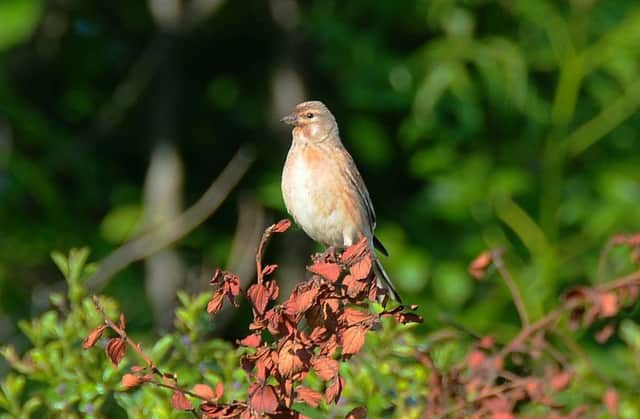Roger Ratcliffe: Flush of Yorkshire sightings of melodic common linnets


These lovely little members of the finch family are in decline, and the UK population is estimated to have dropped by a worrying 57 per cent between 1970 and 2014.
For years I had become quite used to finding them everywhere along the fringes of Rombalds Moor between Wharfedale and Airedale. In particular, the males when seen sitting on top of a fence post or a branch of gorse are absolute charmers with their raspberry coloured breasts and foreheads and warm chestnut mantles.
Advertisement
Hide AdAdvertisement
Hide AdBut then I stopped seeing so many linnets, and although they were still reassuringly present on my favourite walks along the Cleveland Way between Saltburn and Filey they were increasingly absent from scrubby, uncultivated ground further inland.
This year, though, they have behaved like double-decker buses. In quick succession they have turned up on the edge of moors to the west of Haworth and along the lovely little heath of Eaves Top which overlooks the Blackburn Valley to the south of Halifax.
And on Sunday I was treated to a terrific view of a male on a ridge not far from the northern suburbs of Sheffield.
I don’t know whether all this evidence of my own adds up to a revival of the linnet’s fortunes or that I simply got lucky. Time will tell. But it would be great to see them recolonising the upland fringes on which they used to be so common.
Advertisement
Hide AdAdvertisement
Hide AdThat they were once widespread in Yorkshire is shown by the range of different local names that they were given. In the West Riding the bird was popularly known as the red linnet because of the male’s striking colour. Elsewhere it was called the rose lintie. And because of its fondness for gorse bushes, some people christened it the thorn linnet.
Another Yorkshire name, the song linnet, attests to its former status as a very popular cagebird because of its fluty, melodious song.
It has been said that the linnet has the most beautiful song of all our finches, and that in the 19th century linnets and goldfinches were the two most trapped species targeted by professional bird-catchers, who then sold them on at Yorkshire markets.
The pioneering English ornithologist and bird engraver Thomas Bewick once wrote that the linnet “easily adopts the song of other birds, when confined with them, and in some instances has been taught to pronounce words with great distinctness”.
Advertisement
Hide AdAdvertisement
Hide AdFor me, part of the charm of linnets is their choice of habitat. They favour those areas of countryside that ploughs cannot reached because the land is too steep, even if everything around them is cultivated.
On the Yorkshire coast, thankfully, there is still plenty of ground occupied by bramble, gorse and thistle on which linnets can thrive.